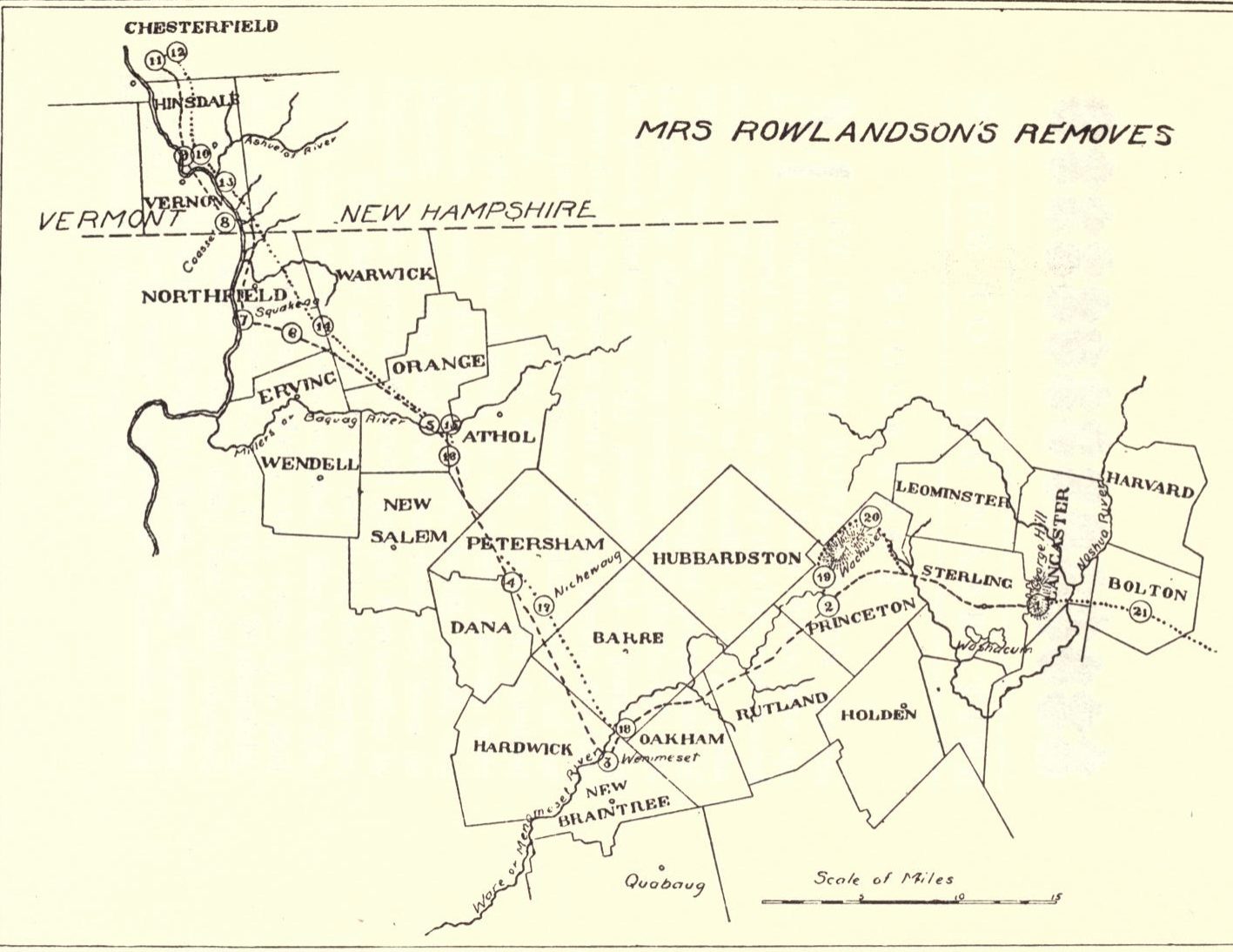Edited by Hannah Willden
After a restless and hungry night there1, we had a wearisome time of it the next day. The Swamp by which we lay, was, as it were, a deep Dungeon, and an exceeding2 high and steep hill before it. Before I got to the top of the hill, I thought my heart and legs, and all would have broken, and failed me. What, through faintness and soreness of body, it was a grievous day of travel to me. As we went along, I saw a place where English Cattle had been: that was3 comfort to me, such as it was: quickly after that we came to an English Path,4 which so took with me, that I thought I could have freely lyen5 down and dyed6. That day, a little after noon, we came to Squaukheag7, where the Indians quickly spread themselves over the deserted English Fields,8 gleaning9 what they could find; some pickt10 up ears11 of Wheat that were crickled12 down, some found ears of Indian Corn,(Corn was a farming staple in Native American peoples diets.)) some found Ground nuts, and others sheaves13 of Wheat that were frozen together in the shock14, & went to threshing15 of them out.

Myself got two ears of Indian Corn, and whilst I did but turn my back, one of them was stolen from me, which much troubled me. There came an Indian to them at that time with a basket of Horse-liver. I asked him to give me a piece. “What,” sayes16 he, “can you eat Horse-liver?”17 I told him, I would try, if he would give a piece, which he did, and I laid it on the coals to rost18; but before it was half ready, they got half of it away from me, so that I was fain19 to take the rest and eat it as it was,20 with the blood about my mouth, and yet a savoury bit it was to me:
A solemn sight methought it was, to see Fields of wheat and Indian Corn forsaken and spoiled: and the remainders of them to be food for our merciless Enemies. That night we had a mess of wheat for our Supper.23
Thanks to Project Gutenberg and archive.org for providing the digitized version of this text free of charge.
Without their generosity, this project would not be possible.
Capitalization, italicization, punctuation, and spelling from the 1682 version of Rowlandson’s narrative have been retained to maintain the utmost authenticity to the original work and author’s intent where clarity is not impeded. ↩
Exceedingly ↩
a ↩
Wagon tracks ↩
Lyen: laid. OED Online ↩
Died ↩
Squakeag: the southernmost town in Sokoki territory, later deemed “Northfield“ by English settlers. OurBelovedKin ↩
Notice Rowlandson’s attention to the English cattle, path, and fields despite her unfamiliarity with the aforementioned English sights. For more information explaining the presence and effect of these sights concerning Rowlandson’s English/American identity see: Benedict Anderson’s Exodus ↩
Gleaning: to gather. OED Online ↩
Picked ↩
Ears of wheat or corn: the seed-bearing head. OED Online ↩
Crickle: variation of crackle. OED Online ↩
Sheaves of wheat: a large bundle of the cereal plant after reaping. OED Online ↩
Shock: A group of sheaves. OED Online ↩
Thresh: to thrash; to separate by mechanical means. OED Online ↩
Says ↩
Italicization of Rowlandson’s 1682 version has been changed to retain the quotations from Gutenberg’s version for clarity ↩
Roast ↩
Fain: glad; willing under the circumstances. OED Online ↩
This incident shows the lack of food available. Everyone is out for whatever food they can get, even by thievery. Yet, some are willing to share what little food they have, even with a captive. ↩
Italicization of Rowlandson’s 1682 version has been changed to retain the quotations from Gutenberg’s version for clarity ↩
Proverb 27:7. “He who is satisfied loathes honey, But to the hungry soul any bitter thing is sweet.” BibleGateway ↩
See AmherstCollege.maps for an interactive map with Rowlandson’s narrative ↩
